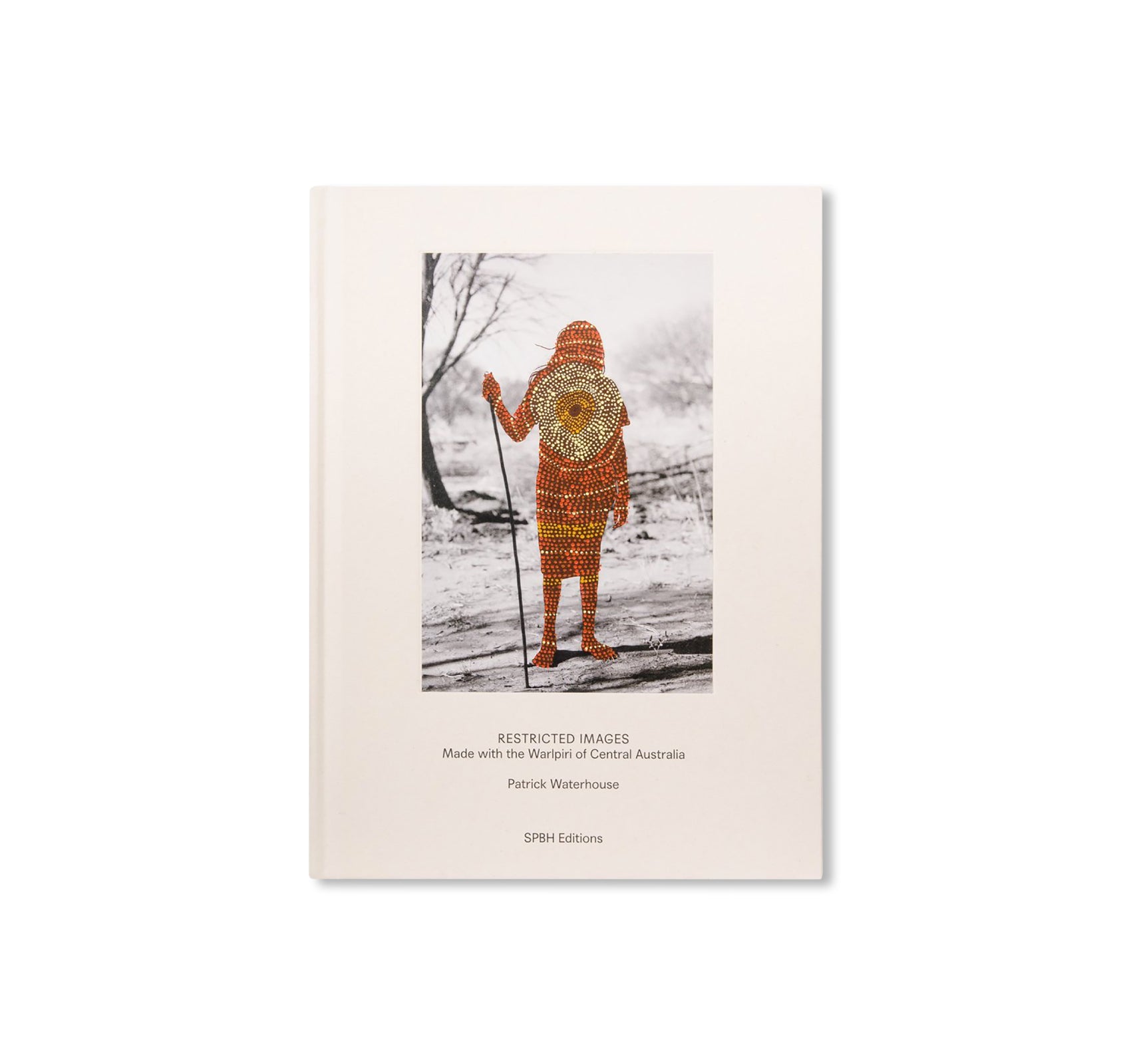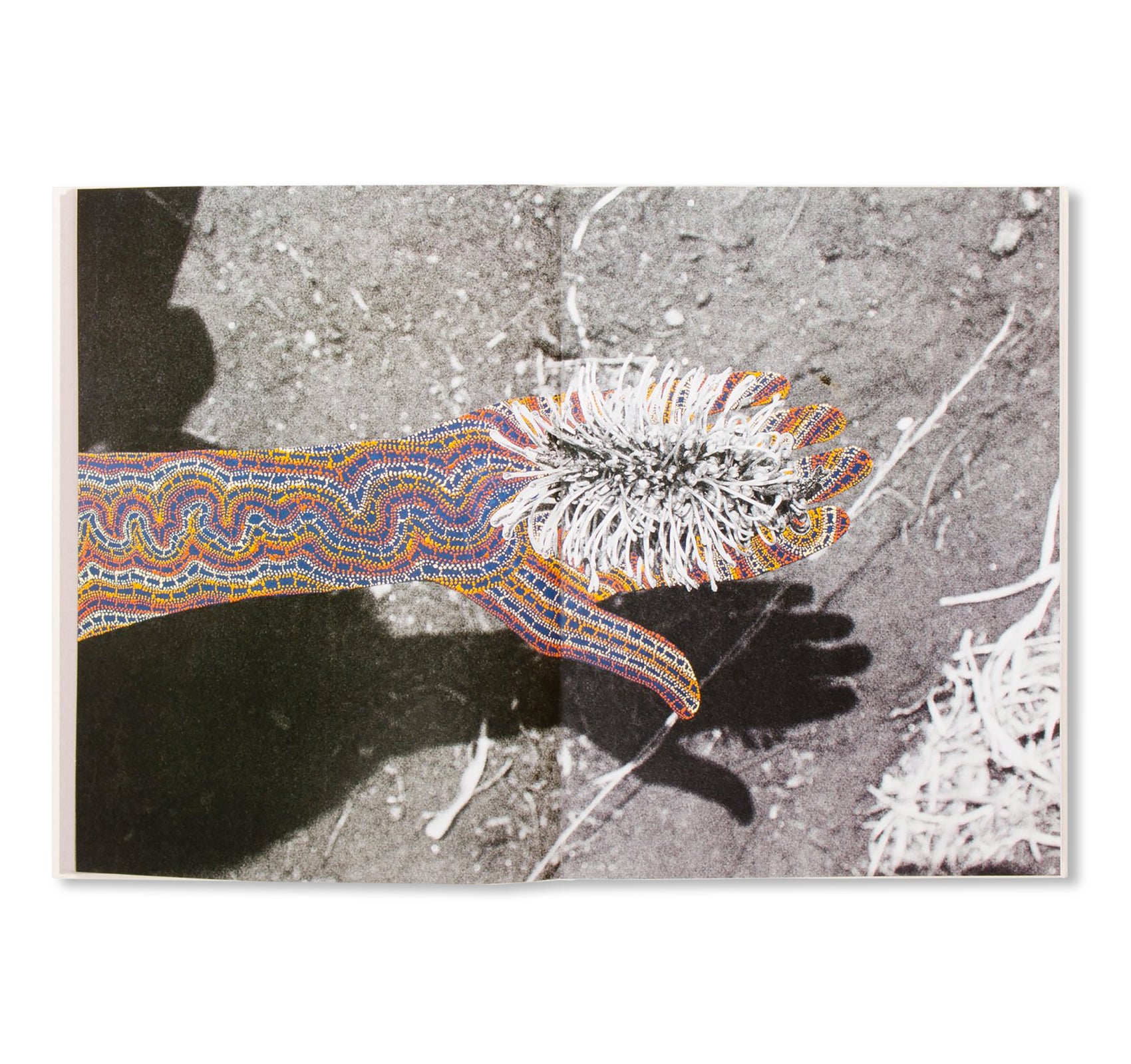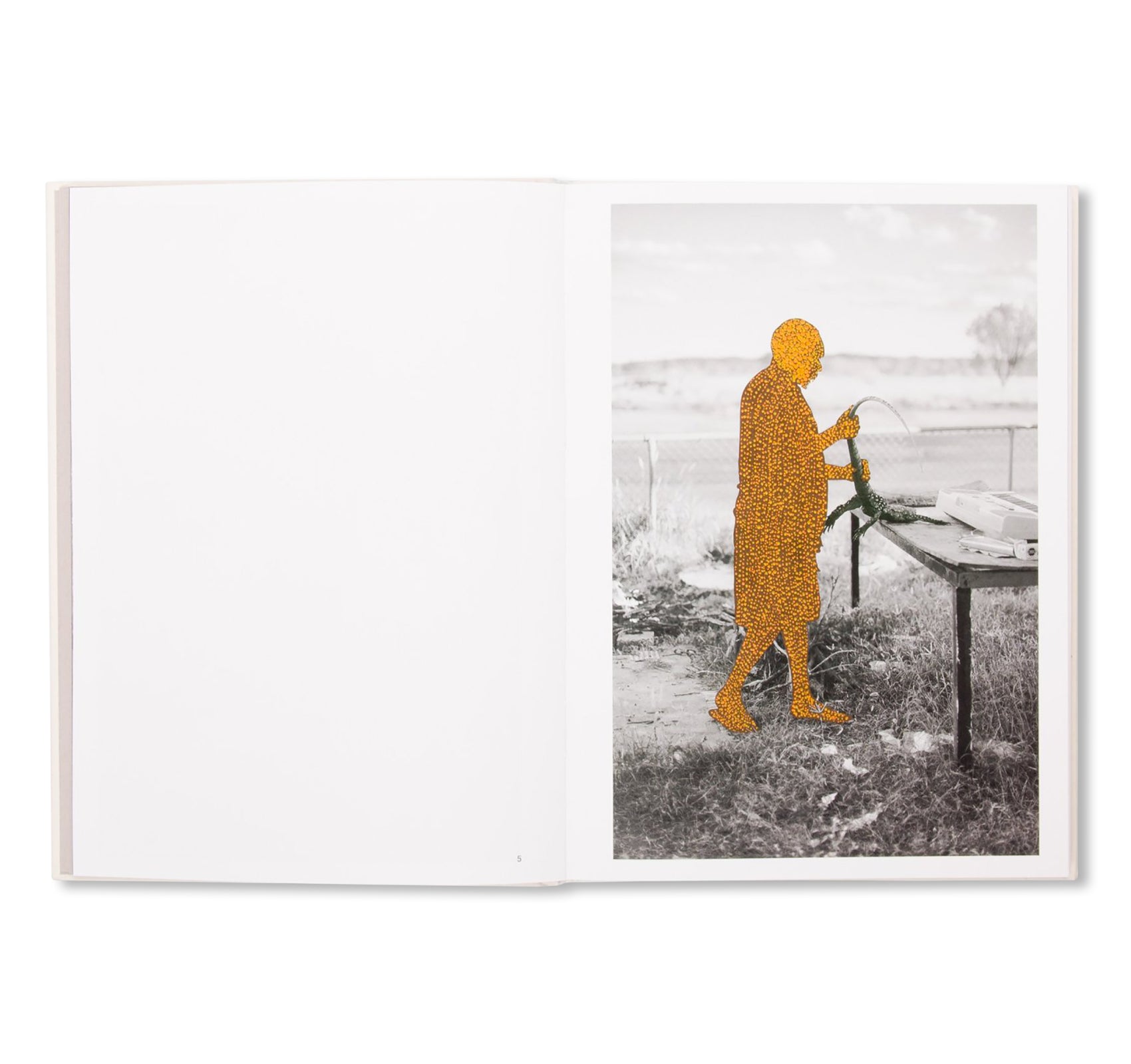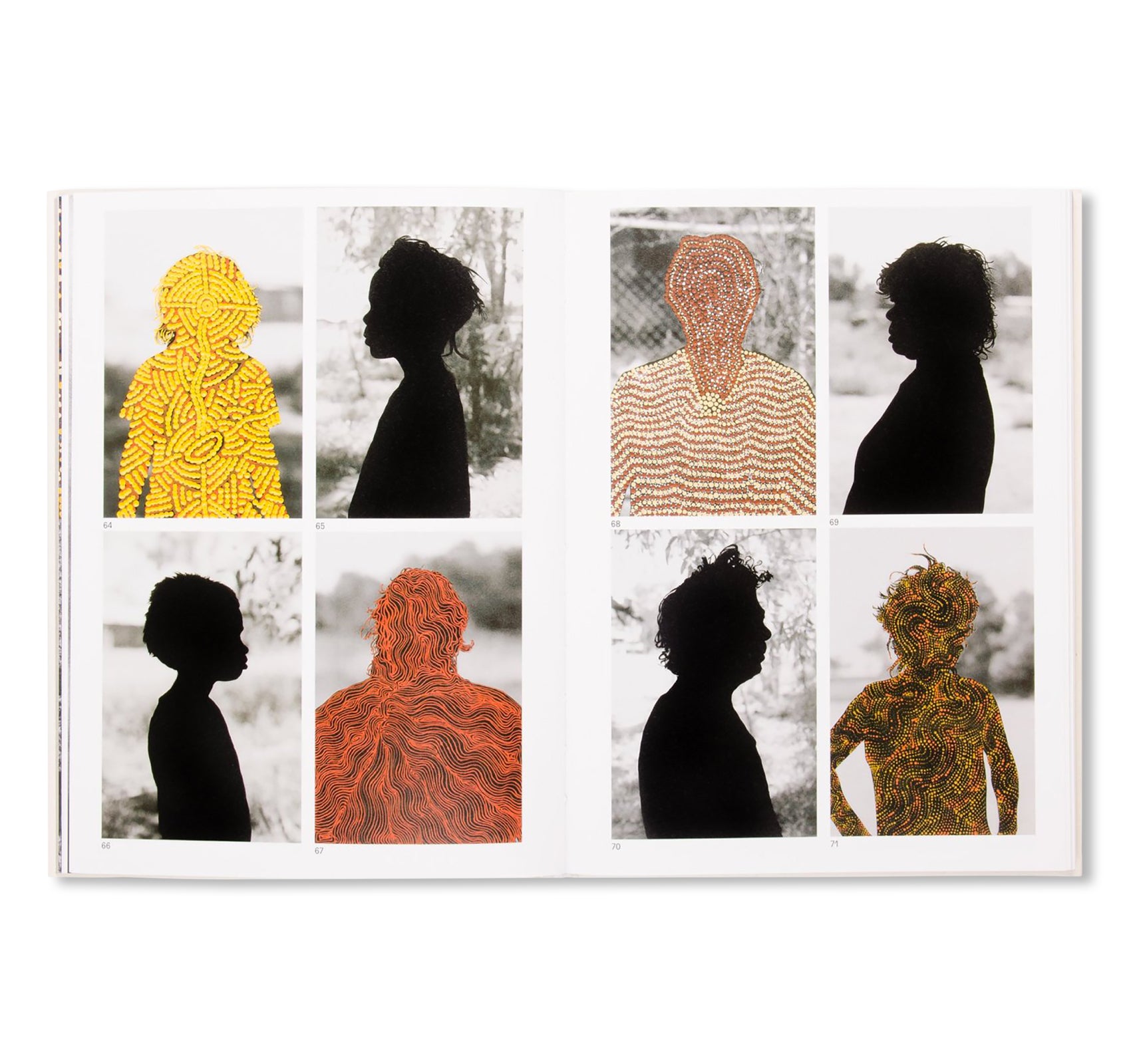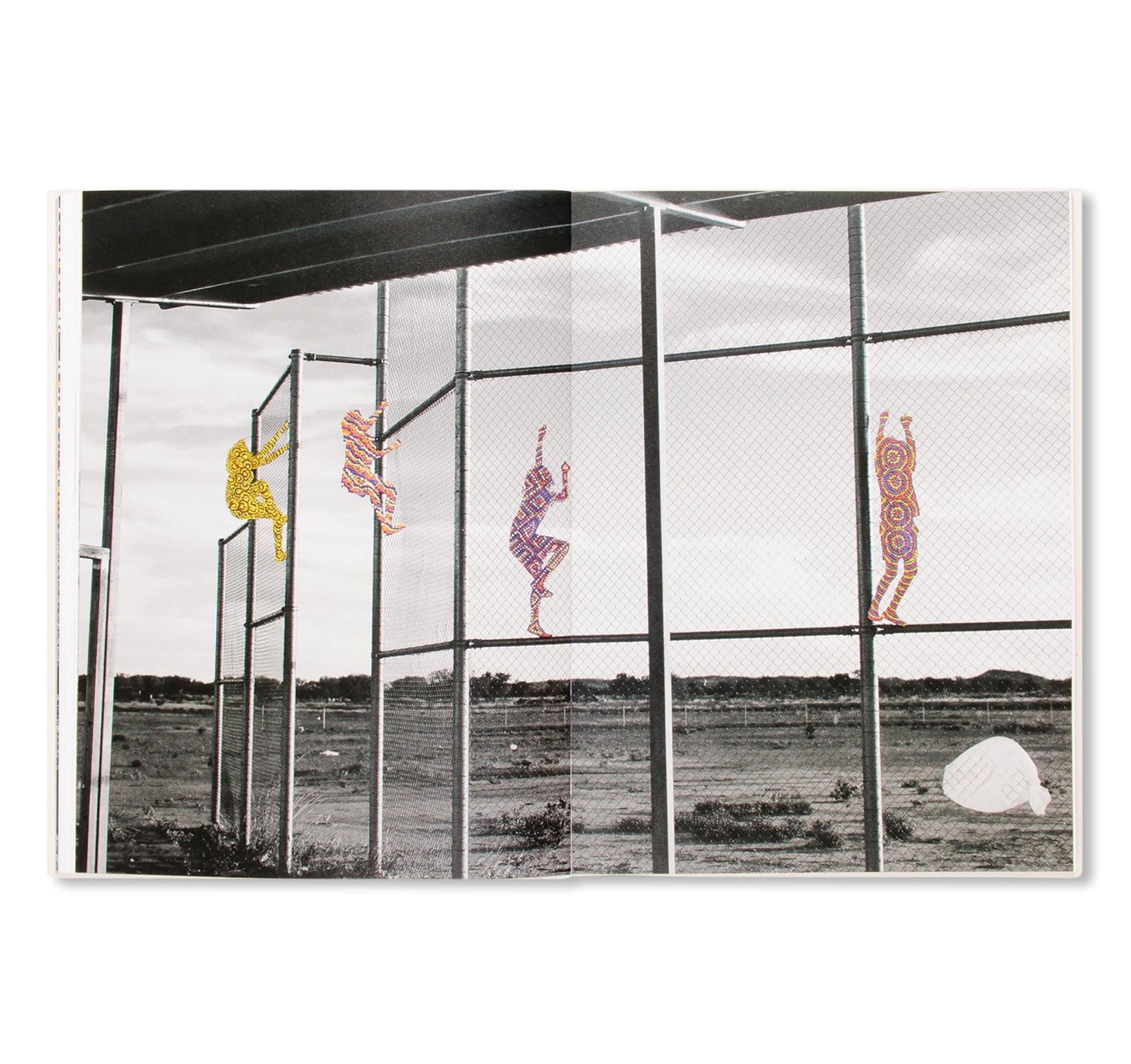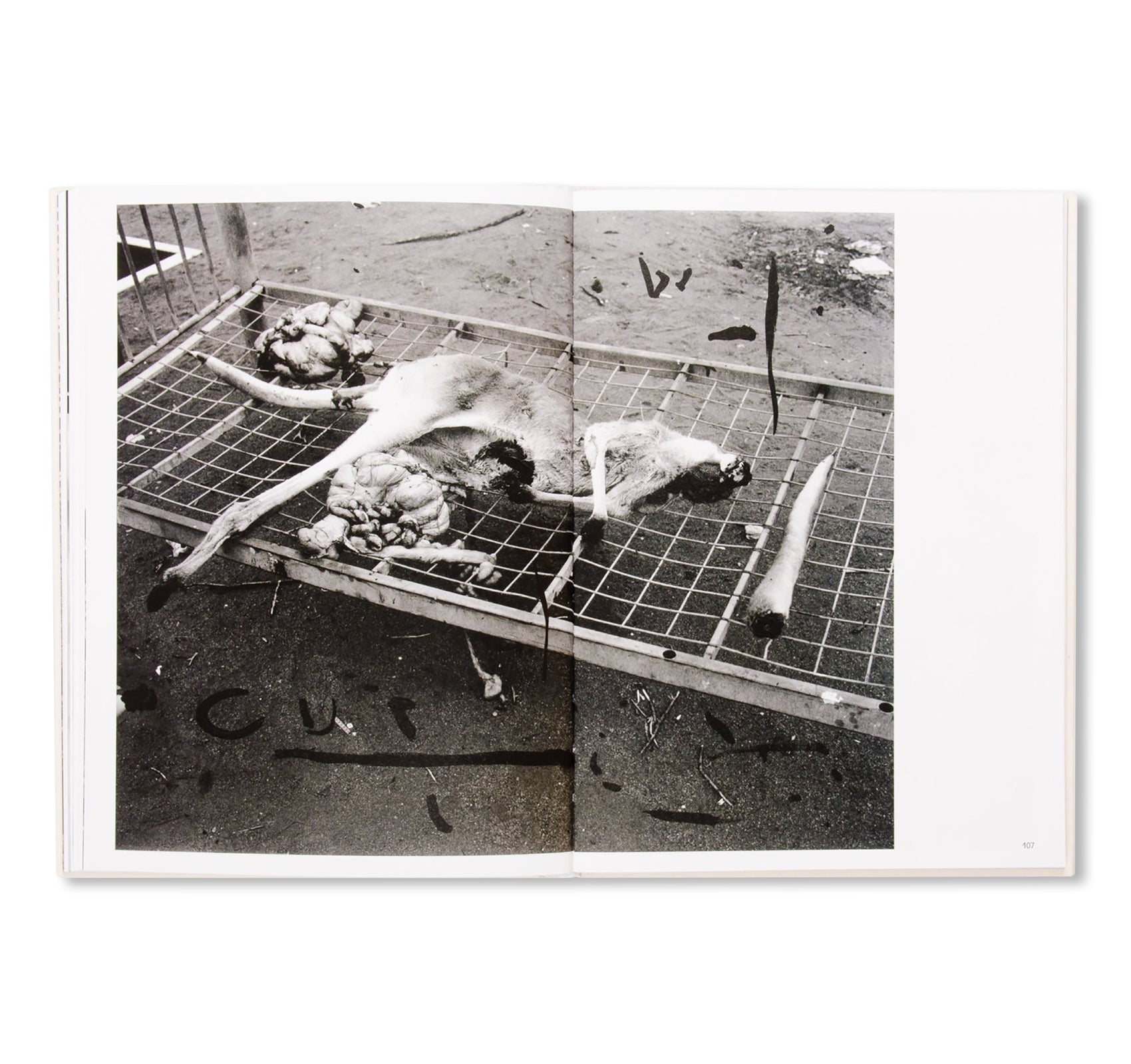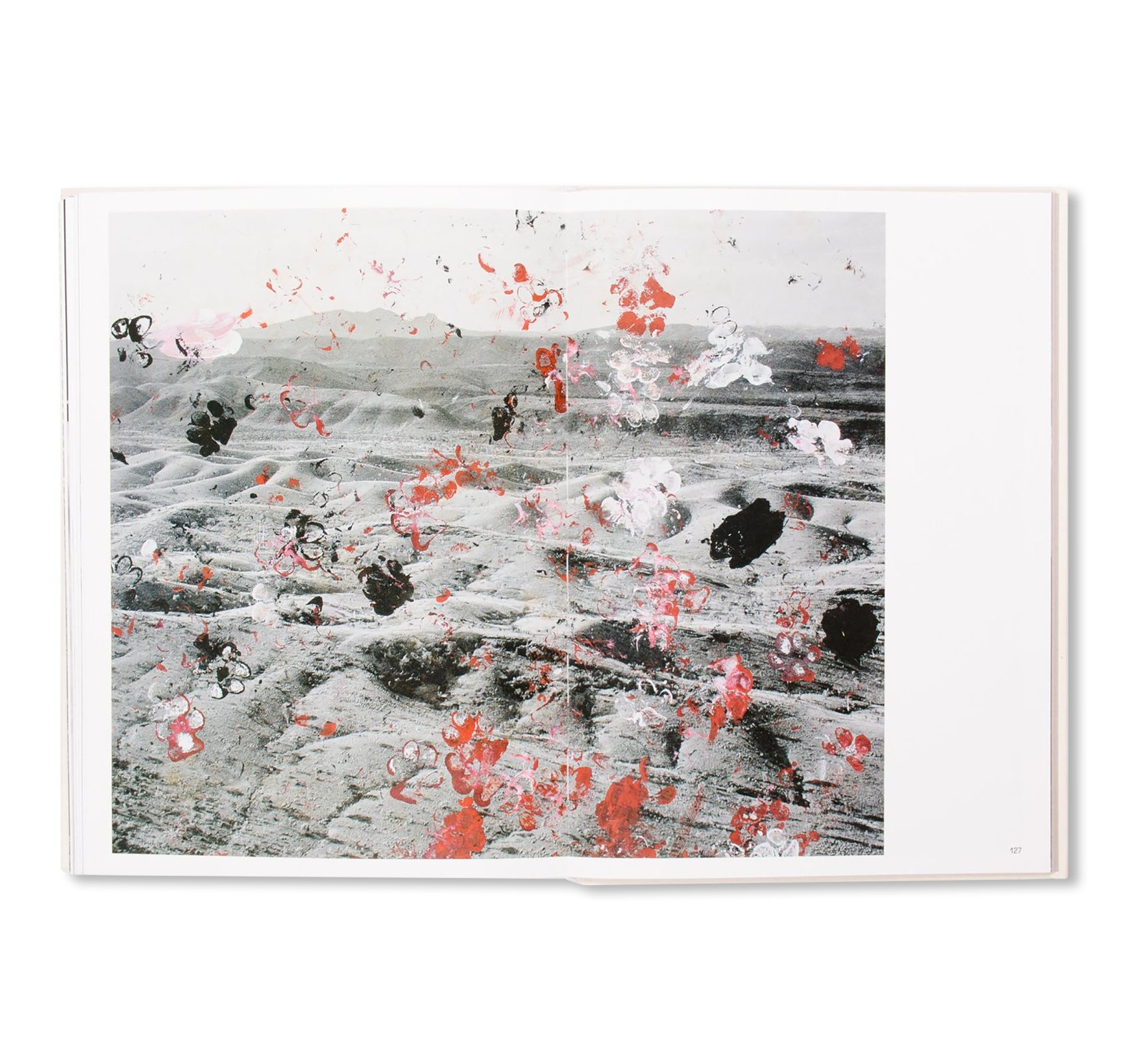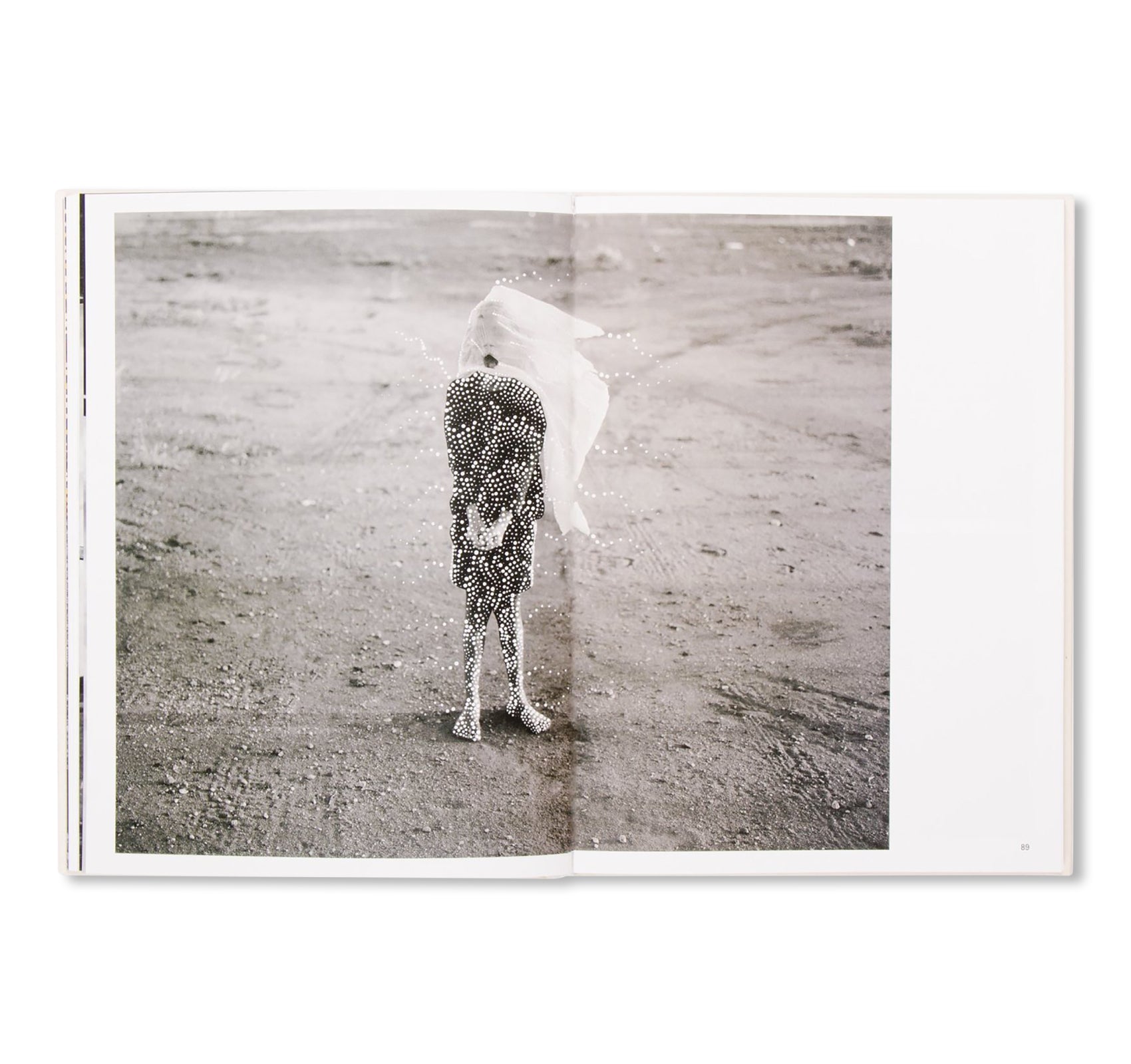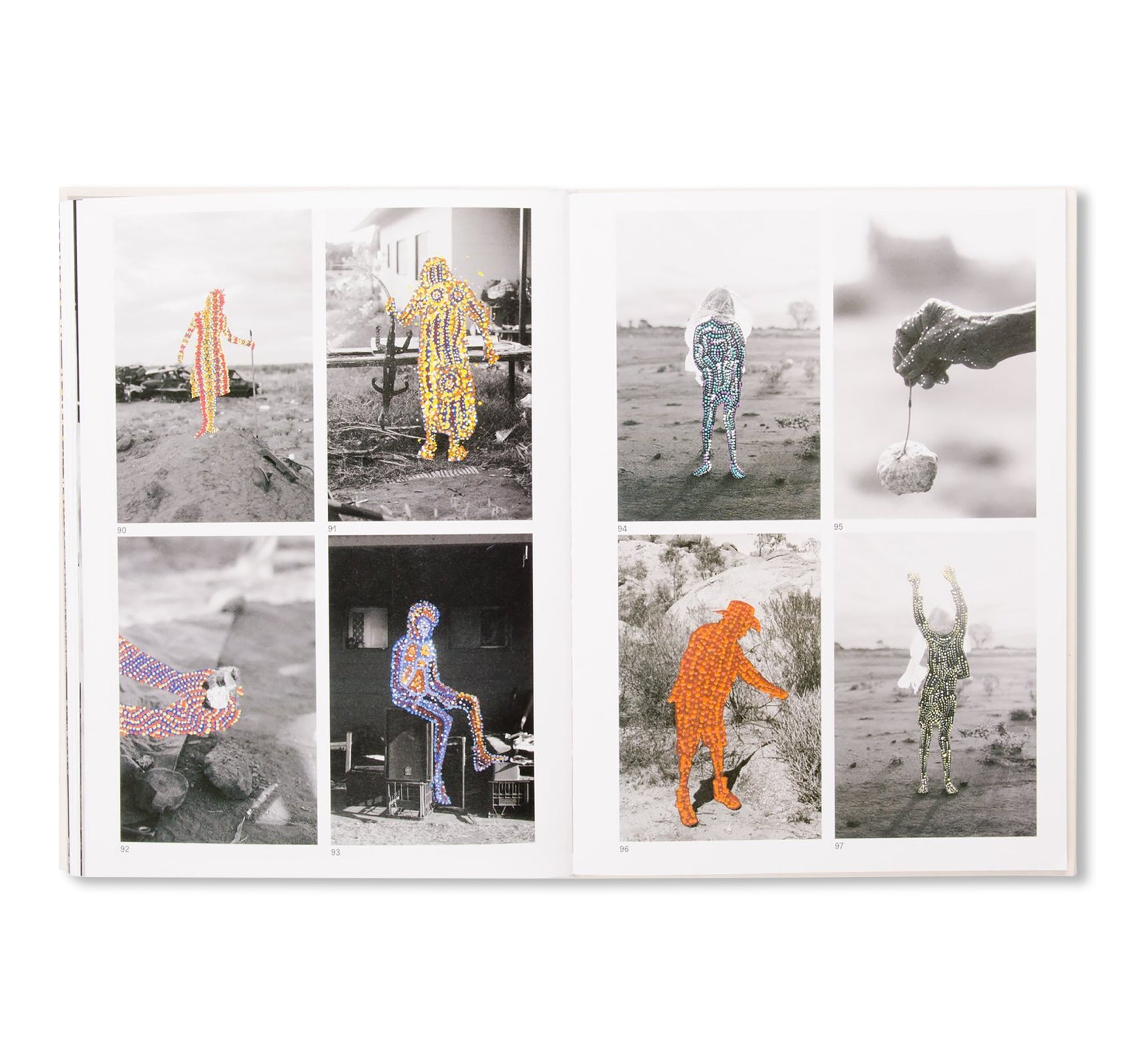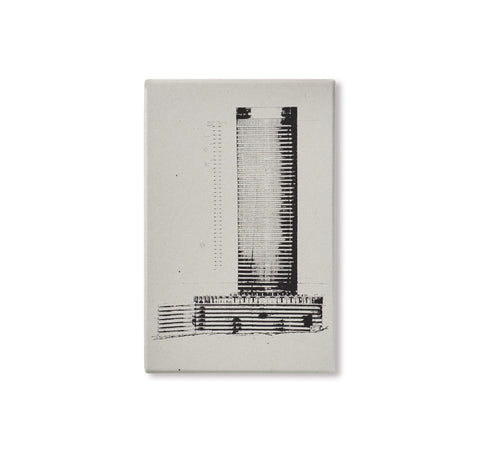RESTRICTED IMAGES by Patrick Waterhouse
イギリス人フォトグラファー、パトリック・ウォーターハウス(Patrick Waterhouse)の作品集。オーストラリア・ノーザンテリトリーにあるワールクラング・アートセンターで、地元のアボリジニであるワルピリ族のアーティストたちと一緒に制作した膨大な数の作品をまとめた1冊。作者にとって、ミケル・ソボツキー(Mikhael Subotzky)と共に「DEUTSCHE BÖRSE PHOTOGRAPHY FOUNDATION PRIZE(ドイツ証券取引所写真財団賞)」を受賞したプロジェクト『PONTE CITY』後に手がけた最初の大きなプロジェクトである。オーストラリアやヨーロッパの美術館や博物館には、人類学的な価値を持つ何千点もの品々が収蔵されているが、こうしたアーカイブのほとんどは非公開になっている。またアボリジニ独特の世界観を侵害するような写真が公開されないように、画像は規制対象になっていることが多い。写真に写っている人の子孫だけが誰にその写真を見せるか決めることができるという規定のために、記録写真の大部分は誰にも見られず埋もれたままである。18世紀後半に入るとこうした写真の価値が見直され、植民地時代の歴史を物語る貴重な資料として注目を浴びるようになりそれらのイメージに対する態度も変わってきたが、美術館側が肖像権の問題をどう扱うべきかについてはっきりとした答えはまだ出ていない。これに対する1つの回答として作者は、アボリジニの人々との共同作業を通じて彼らに画像の主体としての力を象徴的に返還するという試みを行った。ワルピリ族の人々を数年間かけて撮影し、出来上がった写真を印刷し、それを持って再びコミュニティに戻った。コミュニティの人々に伝統的な点描の技法を使って写真を塗りつぶしてもらうことによって、自らの手で写真に規制をかけてもらうことを試みた。アボリジニの肖像や聖なる場所を撮ったモノクロの記録写真は、カラフルなアクリル絵の具で描かれた手の込んだ美しい模様によって生まれ変わった。この長期的なプロジェクトの最初の部分を収めた本書は「何を提示し、何を秘密にするかを決めるのは誰か」という力関係を白紙に戻し、再調整する可能性を探求した。また、お互いを理解しようと歩み寄る1人のアーティストとコミュニティの関係性も伝わってくる。
Restricted Images is a new art book by Patrick Waterhouse, bringing together an expansive collection of artworks made at the Warlukurlangu art centre, NT Australia, with local Warlpiri artists. This is Waterhouse’s first major work since his Deutsche Borse Photography Prize winning project Ponte City. In institutions across Australia and Europe, archives encompassing thousands of colonial-era anthropological artefacts are now largely inaccessible, and images are often restricted to avoid showing pictures that infringe on Aboriginal cultural beliefs. With rules in place that mean only the descendants of people pictured can decide who is allowed to access them, much of the material remains unseen. Attitudes towards these images have changed since they were celebrated as a feat of anthropological photography by colonialists in the late 1800s, and now lingers an institutional uncertainty in how to approach the question of representation. In response, Waterhouse developed a collaborative venture in symbolically returning to the communities the agency over their own images. Spending several years taking pictures of them, he made prints and then returned, inviting the Warlpiri to paint the surfaces of the images and enact their own restrictions upon them using the traditional technique of dot painting. In intricate, colourful acrylic clusters they transformed the black and white depictions of themselves and their sacred sites. Restricted Images is the first instalment in a long-term project that looks to renegotiate the politics of who gets to decide what is seen and what is kept hidden, and reveals artists and a community trying to understand one other.
